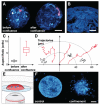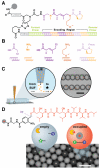Discovery in Droplets
- PMID: 26558892
- PMCID: PMC4865373
- DOI: 10.1021/acs.analchem.5b04139
Discovery in Droplets
Figures










References
-
- Shim J-U, Ranasinghe RT, Smith CA, Ibrahim SM, Hollfelder F, Huck WTS, Klenerman D, Abell C. ACS Nano. 2013;7:5955–5964. - PubMed
-
- Li Z, Leshansky AM, Pismen LM, Tabeling P. Lab Chip. 2015;15:1023–1031. - PubMed
-
- Leman M, Abouakil F, Griffiths AD, Tabeling P. Lab Chip. 2015;15:753–765. - PubMed
-
- Abate AR, Weitz DA. Lab Chip. 2011;11:1911–1915. - PubMed
Publication types
MeSH terms
Substances
Grants and funding
LinkOut - more resources
Full Text Sources
Other Literature Sources

